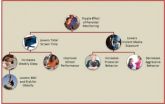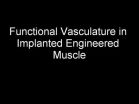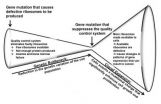(Press-News.org) Alexandria, Va. – Turtles are the last major living vertebrate group to be placed firmly on the tree of life, and the arguments are getting messy. Three fields in particular — paleontology, developmental biology and microbiology/genomics — disagree about how, and from what, turtles may have evolved. In the latest EARTH Magazine feature story, contributing writer Naomi Lubick investigates how these creatures confound scientists on many levels — from their morphology in the paleontological record and in modern day turtles, to the analysis of their genome. Where do they belong in the evolutionary record?
Recent publications and meetings convened on turtle evolution have resulted in, for now, scientists agreeing to disagree. Meet turtles' potential ancestors, and explore the modern research and controversy in the April issue of EARTH Magazine: http://bit.ly/1mqgN9o.
INFORMATION:
Subscribe to EARTH Magazine to unlock all of the exciting stories, photos and interviews, including stories about the geological gems in Gubbio, Italy, how acid rain and ozone depletion may have been the double-whammy that ended the Permian, and how sediments are stumping scientists in Norwegian fjords in the newly redesigned http://www.earthmagazine.org.
Keep up to date with the latest happenings in Earth, energy and environment news with EARTH magazine online at: http://www.earthmagazine.org/. Published by the American Geosciences Institute, EARTH is your source for the science behind the headlines.
The American Geosciences Institute is a nonprofit federation of 50 geoscientific and professional associations that represents more than 250,000 geologists, geophysicists and other earth scientists. Founded in 1948, AGI provides information services to geoscientists, serves as a voice of shared interests in the profession, plays a major role in strengthening geoscience education, and strives to increase public awareness of the vital role the geosciences play in society's use of resources, resiliency to natural hazards, and interaction with the environment.
EARTH Magazine: The trouble with turtles
2014-03-31
ELSE PRESS RELEASES FROM THIS DATE:
Limiting screen time yields mulitple benefits, ISU study finds
2014-03-31
AMES, Iowa – Parents may not always see it, but efforts to limit their children's screen time can make a difference. A new study, published in JAMA Pediatrics, found children get more sleep, do better in school, behave better and see other health benefits when parents limit content and the amount of time their children spend on the computer or in front of the TV.
Douglas Gentile, lead author and an associate professor of psychology at Iowa State, says the effect is not immediate and that makes it difficult for parents to recognize. As a result, parents may think it ...
Early cardiac risks linked to worse cognitive function in middle age
2014-03-31
Young adults with such cardiac risk factors as high blood pressure and elevated glucose levels have significantly worse cognitive function in middle age, according to a new study by dementia researchers at UC San Francisco.
The findings bolster the view that diseases like Alzheimer's develop over an individual's lifespan and may be set in motion early in life. And they offer hope that young adults may be able to lower their risk of developing dementia through diet and exercise, or even by taking medications.
"These cardiovascular risk factors are all quite modifiable," ...
Computer maps 21 distinct emotional expressions -- even 'happily disgusted'
2014-03-31
COLUMBUS, Ohio—Researchers at The Ohio State University have found a way for computers to recognize 21 distinct facial expressions—even expressions for complex or seemingly contradictory emotions such as "happily disgusted" or "sadly angry."
In the current issue of the Proceedings of the National Academy of Sciences, they report that they were able to more than triple the number of documented facial expressions that researchers can now use for cognitive analysis.
"We've gone beyond facial expressions for simple emotions like 'happy' or 'sad.' We found a strong consistency ...
Using your loaf to fight brain disease
2014-03-31
A humble ingredient of bread – baker's yeast – has provided scientists with remarkable new insights into understanding basic processes likely involved in diseases such as Parkinson's and cancer.
In a new study published today (Monday March 31) in the prestigious journal PNAS (Proceedings of the National Academy of Science), the team from Germany, Leicester, and Portugal detail a new advance – describing for the first time a key feature in cellular development linked to the onset of these devastating diseases.
The research team is from the University Medical Center Goettingen, ...
Can antibiotics cause autoimmunity?
2014-03-31
(PHILADELPHIA) -- The code for every gene includes a message at the end of it that signals the translation machinery to stop. Some diseases, such as cystic fibrosis and Duchenne muscular dystrophy, can result from mutations that insert this stop signal into the middle of an essential gene, causing the resulting protein to be truncated. Some antibiotics cause the cell's translation machinery to ignore the stop codons and are therefore being explored as a potential therapy for these diseases. But new research reported online in Proceedings of the National Academy of Sciences ...
Self-healing engineered muscle grown in the laboratory
2014-03-31
VIDEO:
After veins grow into the implanted engineered muscle fibers, blood cells can be seen traveling through them, sustaining and nourishing the new tissue.
Click here for more information.
DURHAM, N.C. -- Biomedical engineers have grown living skeletal muscle that looks a lot like the real thing. It contracts powerfully and rapidly, integrates into mice quickly, and for the first time, demonstrates the ability to heal itself both inside the laboratory and inside an animal.
The ...
Ancient whodunit may be solved: The microbes did it!
2014-03-31
Evidence left at the crime scene is abundant and global: Fossil remains show that sometime around 252 million years ago, about 90 percent of all species on Earth were suddenly wiped out — by far the largest of this planet's five known mass extinctions. But pinpointing the culprit has been difficult, and controversial.
Now, a team of MIT researchers may have found enough evidence to convict the guilty parties — but you'll need a microscope to see the killers.
The perpetrators, this new work suggests, were not asteroids, volcanoes, or raging coal fires, all of which have ...
Experimental cancer drug reverses schizophrenia in adolescent mice
2014-03-31
Johns Hopkins researchers say that an experimental anticancer compound appears to have reversed behaviors associated with schizophrenia and restored some lost brain cell function in adolescent mice with a rodent version of the devastating mental illness.
The drug is one of a class of compounds known as PAK inhibitors, which have been shown in animal experiments to confer some protection from brain damage due to Fragile X syndrome, an inherited disease in humans marked by mental retardation. There also is some evidence, experts say, suggesting PAK inhibitors could be used ...
Possible explanation for human diseases caused by defective ribosomes
2014-03-31
Ribosomes are essential for life, generating all of the proteins required for cells to grow. Mutations in some of the proteins that make ribosomes cause disorders characterized by bone marrow failure and anemia early in life, followed by elevated cancer risk in middle age. These disorders are generally called "ribosomopathies."
How can ribosomopathies first appear as diseases caused by too few cells, but later turn into diseases caused by too many cells? This paradox has puzzled the scientific community for years. A new study, which uses a genetic approach to examine ...
Oxygen depletion in the Baltic Sea is 10 times worse than a century ago
2014-03-31
This news release is available in German. After several years of discussions, researchers from Aarhus University (Denmark), Lund University (Sweden) and Stockholm University (Sweden) have determined that nutrients from the land are the main cause of widespread areas of oxygen depletion. The results were published on 31 March in the prestigious American journal Proceedings of the National Academy of Sciences.
Nutrients are the villain
The deepest areas of the Baltic Sea have always had a low oxygen content. The inflow of fresh water is actually limited by low thresholds ...





